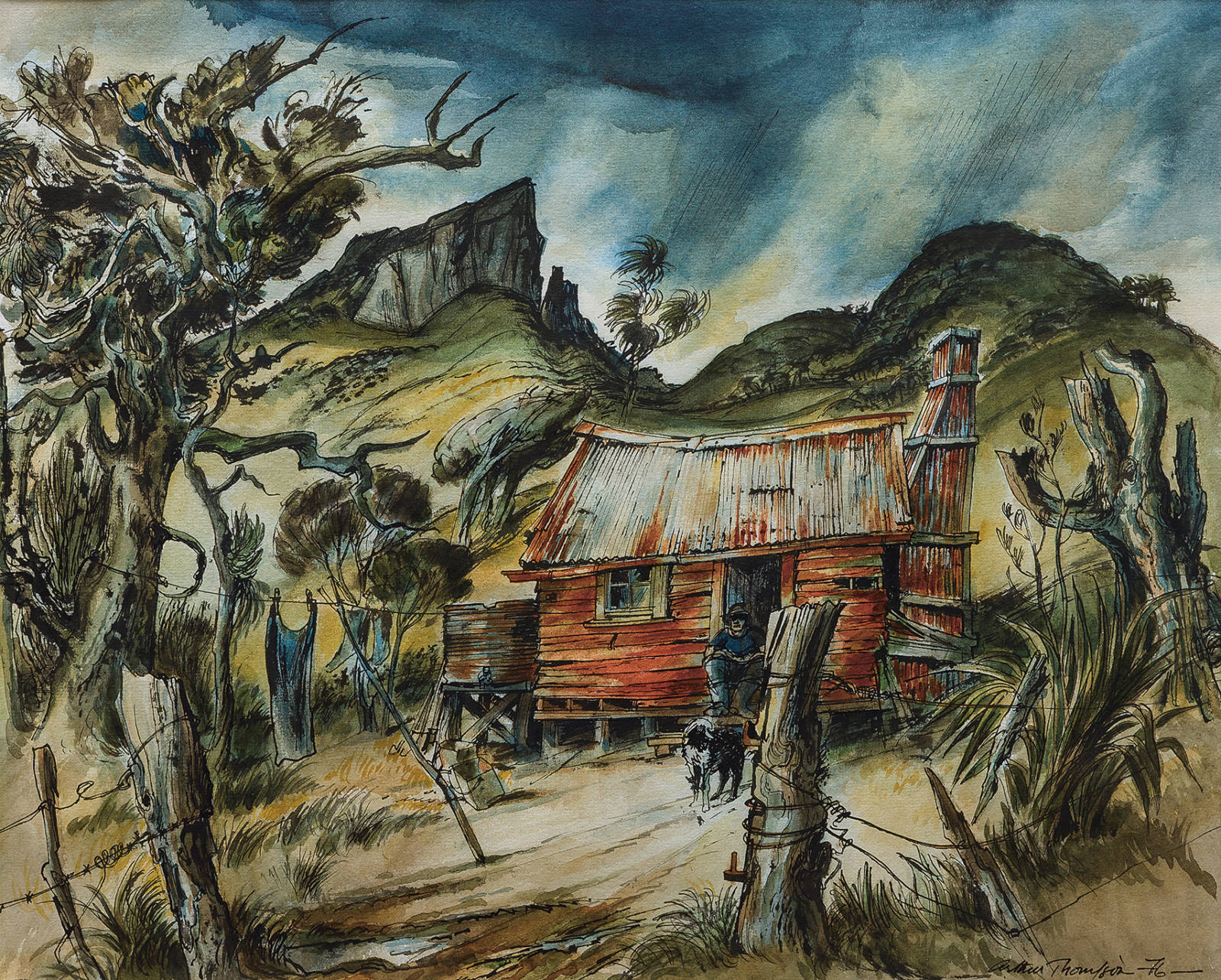THOMPSON, Arthur;
Shepherd’s Hut, Northland
1976
Ink and watercolour on paper
380 x 470mm

The following text comes from the catalogue for the exhibition Tirohanga Whānui.
Auckland-born Arthur Thompson studied at Elam School of Art during the Depression of the 1930s. Thereafter, there was little opportunity for artists (‘no work, no scholarships, no buyers’, as he himself wrote) other than annual exhibitions at the Auckland Society of Arts. Like other aspiring artists of the time, he was obliged to turn his considerable skills to commercial art.
By the 1950s, he was well known for his TEAL airline posters advertising Pacific destinations and for his covers for Auckland Festival brochures. By the 1960s, he had broadened his skills to become a costume and set designer for theatre, film, and television, in 1961 working in England on David Lean’s film Lawrence of Arabia. In 1963, he and his wife, Barbara, bought her father Arnold Goodwin’s pioneering puppetry theatre business, Goodwin Marionette Theatre, which they continued to operate successfully, making puppets and performing touring shows all over Aotearoa.
From the early 1950s, rural–urban drift had resulted in many old farm buildings being simply closed up and left to decay. Māori, many from the North, moved to the cities in large numbers seeking economic security. Artists were dismayed by this but also attracted—as they were to the task of recording old wooden houses in Auckland shortly before their demolition for motorway development.
Arthur Thompson, like John Holmwood, Eric Lee-Johnson, and May Smith, had worked in England and would have been familiar with the paintings of John Piper, Paul Nash, and Eric Ravilious, for whom the picturesque, melancholy qualities of bombed or otherwise decaying buildings were a creative spur. No bombs had fallen in Northland; however, derelict houses were everywhere.
The Kaikohe-born poet Hone Tūwhare (1922–2008) put it most eloquently in ‘The Old Place’ (1964):
On the cream lorry
or morning paper van
no one comes,
for no one will ever leave
the golden city on the fussy train;
and there will be no more waiting
on the hill beside the quiet tree
where the old place falters
because no one comes any more
no one.
Exhibition History
Tirohanga Whānui: Views from the Past, Te Kōngahu Museum of Waitangi, 15 April to 15 September 2017
Provenance
?–
Fletcher Trust Collection, purchased from Webb’s, Tāmaki Makaurau

